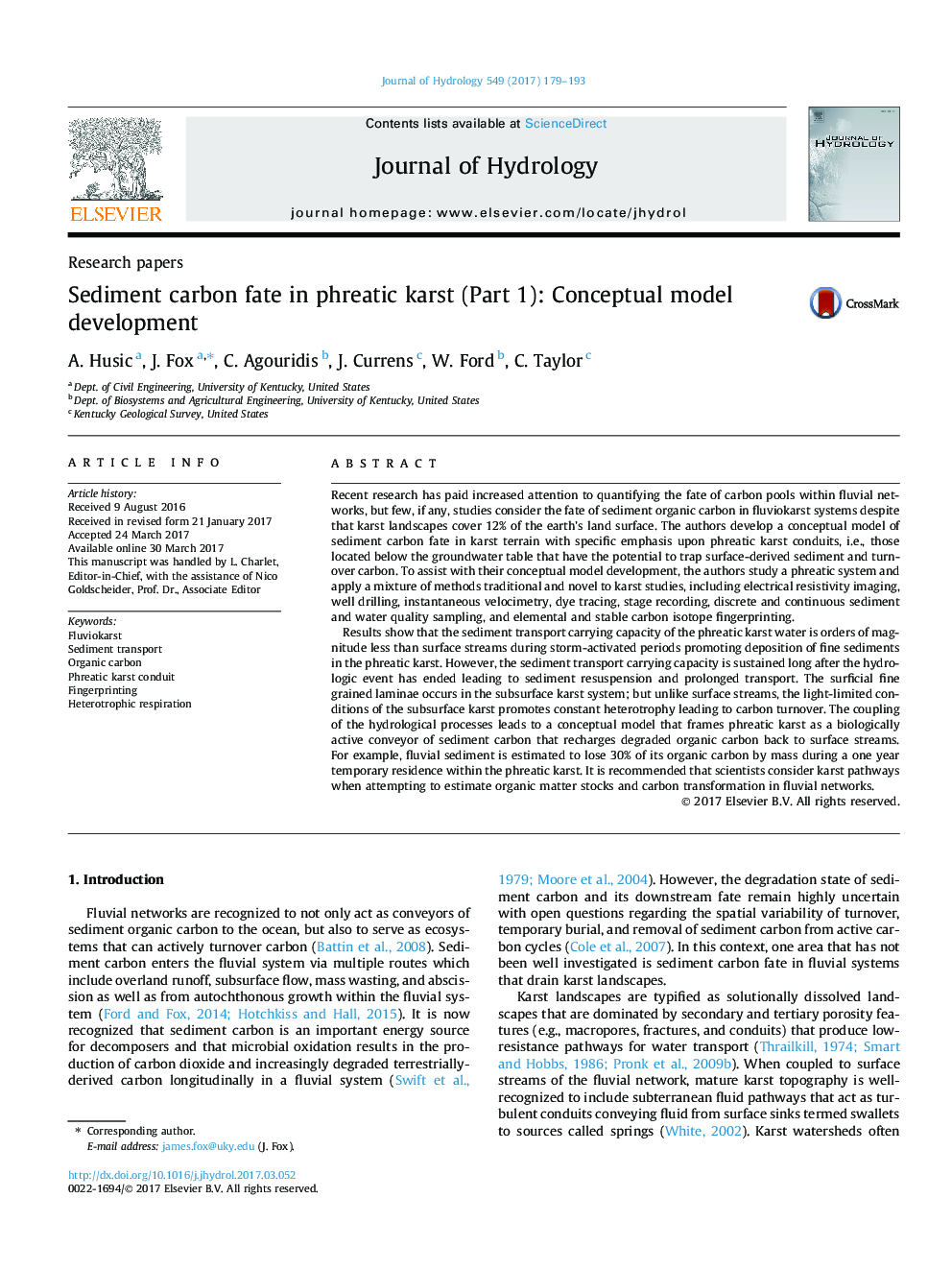| Article ID | Journal | Published Year | Pages | File Type |
|---|---|---|---|---|
| 5770975 | Journal of Hydrology | 2017 | 15 Pages |
Abstract
Results show that the sediment transport carrying capacity of the phreatic karst water is orders of magnitude less than surface streams during storm-activated periods promoting deposition of fine sediments in the phreatic karst. However, the sediment transport carrying capacity is sustained long after the hydrologic event has ended leading to sediment resuspension and prolonged transport. The surficial fine grained laminae occurs in the subsurface karst system; but unlike surface streams, the light-limited conditions of the subsurface karst promotes constant heterotrophy leading to carbon turnover. The coupling of the hydrological processes leads to a conceptual model that frames phreatic karst as a biologically active conveyor of sediment carbon that recharges degraded organic carbon back to surface streams. For example, fluvial sediment is estimated to lose 30% of its organic carbon by mass during a one year temporary residence within the phreatic karst. It is recommended that scientists consider karst pathways when attempting to estimate organic matter stocks and carbon transformation in fluvial networks.
Related Topics
Physical Sciences and Engineering
Earth and Planetary Sciences
Earth-Surface Processes
Authors
A. Husic, J. Fox, C. Agouridis, J. Currens, W. Ford, C. Taylor,
